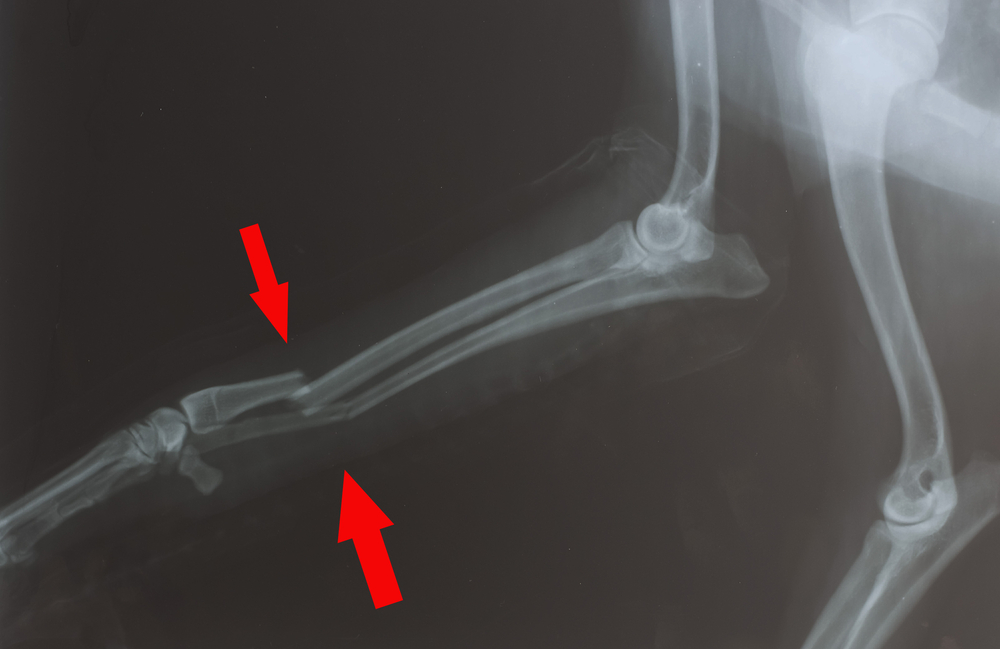If your dog is favoring a limb, the underlying issue must be addressed to help resolve the problem. Dogs can limp for numerous reasons, and since they can’t tell us where they hurt, diagnosing the problem can be difficult. Our Companion Care Animal Clinic team wants your pet to move as soundly as possible, with no pain, so we provide information about common limping causes in dogs and how these conditions are addressed.
Dog limping assessment
If your dog refuses to bear weight on a particular limb, you can easily identify the problematic leg but, in many cases, you know only that your dog is lame because of their abnormal gait. How do you tell which leg is lame? These guidelines should help:
- Right front leg lameness — Your dog raises their head when the right front limb touches the ground and lowers their head when the left limb bears weight.
- Left front leg lameness — Your dog raises their head when the left front limb touches the ground and lowers their head when the right limb bears weight.
- Right hind leg lameness — Your dog leans forward to take weight off their hind end, and raises their tail when the right hind limb touches the ground.
- Left hind leg lameness — Your dog leans forward to take weight off their hind end, and raises their tail when the left hind limb touches the ground.
Dog limping causes
Numerous conditions can lead to limping. Some common causes include:
- Cranial cruciate ligament (CCL) injury — CCL injury is one of the most common causes of hindlimb limping. The CCL is an important support structure inside the knee, and a tear or rupture causes joint instability and discomfort. Usually, the ligament degenerates slowly over several months or years, with body condition, genetics, conformation, and other factors contributing to the condition. CCL injury can affect any dog, but some breeds are at higher risk, including rottweilers, Labrador retrievers, Saint Bernards, Chesapeake Bay retrievers, and Newfoundlands.
- Hip dysplasia — Hip dysplasia is a common condition in large- and giant-breed dogs that causes hip joint laxity and results in dysfunction and pain. Affected dogs tend to run with a bunny-hopping gait and may sit in abnormal positions. Many dogs don’t manifest signs until later in life, but the condition can be detected as young as 4 months of age with palpation techniques and special X-rays. Hip dysplasia is primarily a genetic disease, but other contributing factors include nutrition, neutering age, body condition, and exercise levels.
- Elbow dysplasia — Multiple elbow joint developmental abnormalities lead to elbow dysplasia. The exact cause is unknown, but potential contributing factors include genetics, cartilage growth abnormalities, trauma, and nutritional inadequacies. Breeds at increased risk include Bernese Mountain dogs, German shepherds, golden retrievers, and Labrador retrievers. Affected dogs usually have front limb lameness, often in both elbows, that worsens over weeks or months.
- Bone fracture — Dogs most often break bones because of trauma, such as being hit by a car, falling from an excessive height, and gunshot injuries. They will favor the broken limb, and show other signs that may include swelling and bruising at the fracture site, crepitus when they move the limb, and abnormal conformation.
- Osteoarthritis (OA) — OA affects about 25% of dogs and about 60% of senior dogs. The disease is progressive, and causes cartilage degeneration, joint capsule thickening, and new bone formation, along with joint pain and decreased mobility. OA can be associated with aging or caused by injuries, hip or elbow dysplasia, patellar luxation, or CCL disease.
- Torn nails — Your dog’s nail contains blood vessels and nerves, called the quick, surrounded by a layer of hard material, called keratin. If they tear their nail to the quick, significant pain and bleeding can occur.
- Tick-borne disease — Joint inflammation and pain from tick-borne diseases, such as Lyme disease and Rocky Mountain spotted fever, can cause limping.
- Cancer — Dogs with cancer that affects the bone or surrounding tissue may limp.
- Intervertebral disc disease (IVDD) — IVDD is a neurologic disease that involves the spine and vertebrae. A spinal cord injury can lead to an apparent limp.
Dog limping emergencies

If your dog is limping, they should be evaluated by a veterinarian to determine the cause and devise an appropriate treatment plan. In some cases, you can schedule an appointment, but other conditions require emergency care, including:
- Trauma — If your dog is hit by a car or they fall from an elevated height, they need immediate veterinary care, not only to determine why they are limping, but also whether they have internal injuries that need emergency attention.
- Broken bone — A broken bone is extremely painful, and must be stabilized as soon as possible.
- Non-weight bearing — If your dog refuses to bear weight on the affected limb, they need emergency veterinary care.
- Swelling — If the lame limb is swollen or hot, your dog must be evaluated by a veterinarian as soon as possible.
- Excessive pain — Seek emergency veterinary care if your dog is in extreme pain, and exhibiting signs such as vocalization, trembling, unwillingness to move, and aggression.
- Other signs — Seek immediate veterinary care if your dog is not only limping but also exhibiting signs such as inappetence, fever, or lethargy.
If your dog has a mild limp, you may be tempted to simply administer a drug from your medicine cabinet, but never give your dog medication before consulting our Companion Care Animal Clinic team, because many over-the-counter and prescription medications intended for human use are toxic to dogs. Contact us, so we can help determine the best way to care for your limping dog.







Leave A Comment